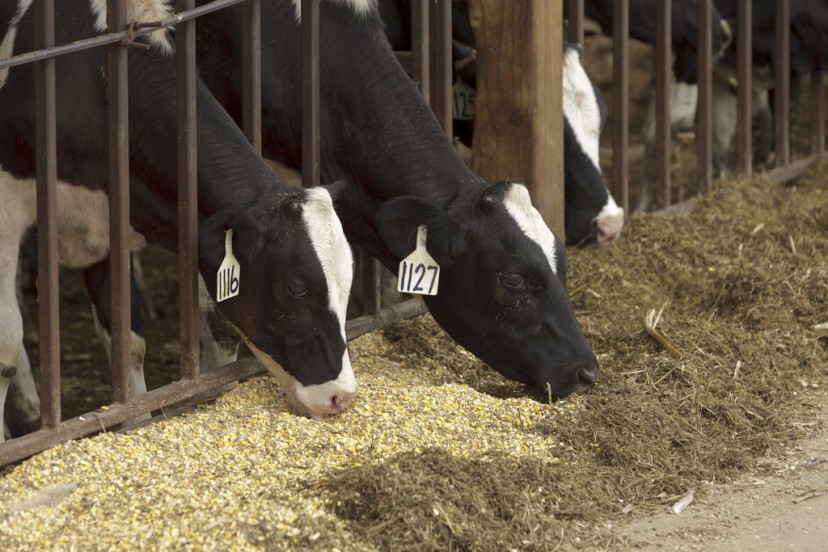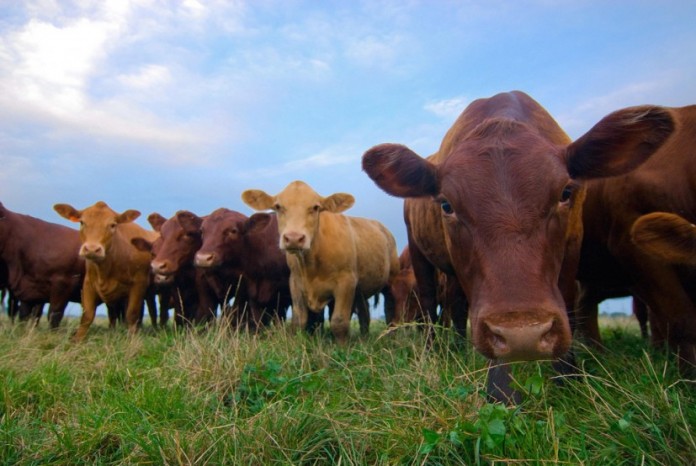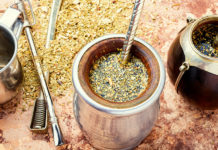Consumer Reports just published a study on the safety of ground beef, and the findings confirmed what many thought….and then some!
Their results found bacterial contamination from fecal matter in EVERY SAMPLE of ground beef they tested, along with other bacterial contaminants in varying amounts.
Those results are enough to give most of us pause, but they also found something else interesting: The beef from cows that were raised more naturally – with no antibiotics or with diets of mostly grass – had significantly lower contamination levels.
“Like Cake and Ice Cream for Cows”
Cows are supposed to eat grass, not grains.
The study explains that although all cows in the U.S. start their lives on a pasture with a grass-fed diet, they’re soon shipped to feedlots, where they primarily feed on grains like corn and soy. Feedlots are generally less expensive to maintain than pasture, and grains fatten cows up more quickly for market, which is why grain-feeding is standard procedure for most cattle companies.
However, grains are not healthy for cows.

This Washington Post article quotes famed animal expert Temple Grandin compared grains for cows to “cake and ice cream” for people.
It’s a great comparison, because we can all imagine what we’d feel like if we ate nothing but cake and ice cream for every meal on a daily basis. It’s understandable that eating only cake and ice cream would quickly lead to serious health problems. That’s exactly what happens with grain-fed cows; they require more antibiotics to keep them healthy.
Rise of the Superbug
Overuse of antibiotics in general leads to antibiotic resistance, and then of course to some very nasty bugs. That explains why the Consumer Reports study found so much more dangerous bacteria in the meat of conventionally raised cows than in the meat of grass-fed cows.
From the report:
“18 percent of conventional beef samples were also contaminated with SUPERBUGS—the dangerous bacteria that are resistant to three or more classes of antibiotics—compared with just 9 percent of beef from samples that were sustainably produced.”
The bacteria from these feedlots don’t just threaten the safety of the meat itself. It can pose a public health threat when runoff contaminates water or crops in other fields where manure is used as fertilizer.
Other Benefits of Grass-Fed Beef
Not only is grass-fed beef less likely to be contaminated; it also has other health advantages over grain-fed beef. Grass-fed beef has less total fat, more heart-healthy omega-3 fatty acids, and more antioxidant vitamins such as vitamin E (many people also say it tastes better!).
Of course, because farming methods and individual animals vary quite a bit, it’s hard to know when you eat grass-fed beef how much more health benefits you’ll get from that particular animal.
The issue isn’t always as simple as grain vs. grass: Some farmers feed their cows both, and some farms are better than others at keeping their feeding lots dry, and pleasant and relatively sanitary – so beef doesn’t have to be solely grass-fed to be healthier.
That’s why getting a better understanding of where your beef is coming from and how it was raised is helpful.
Of course, proper handling and cooking of ground beef should kill most, if not all, of the bacteria found in raw beef, so food safety is important. However, this report is yet another reminder that naturally raised food (including food from animals) is generally better for us, and that we should all be more informed of what happens to our food before it ends up on our plates.
—
Photo credits:








